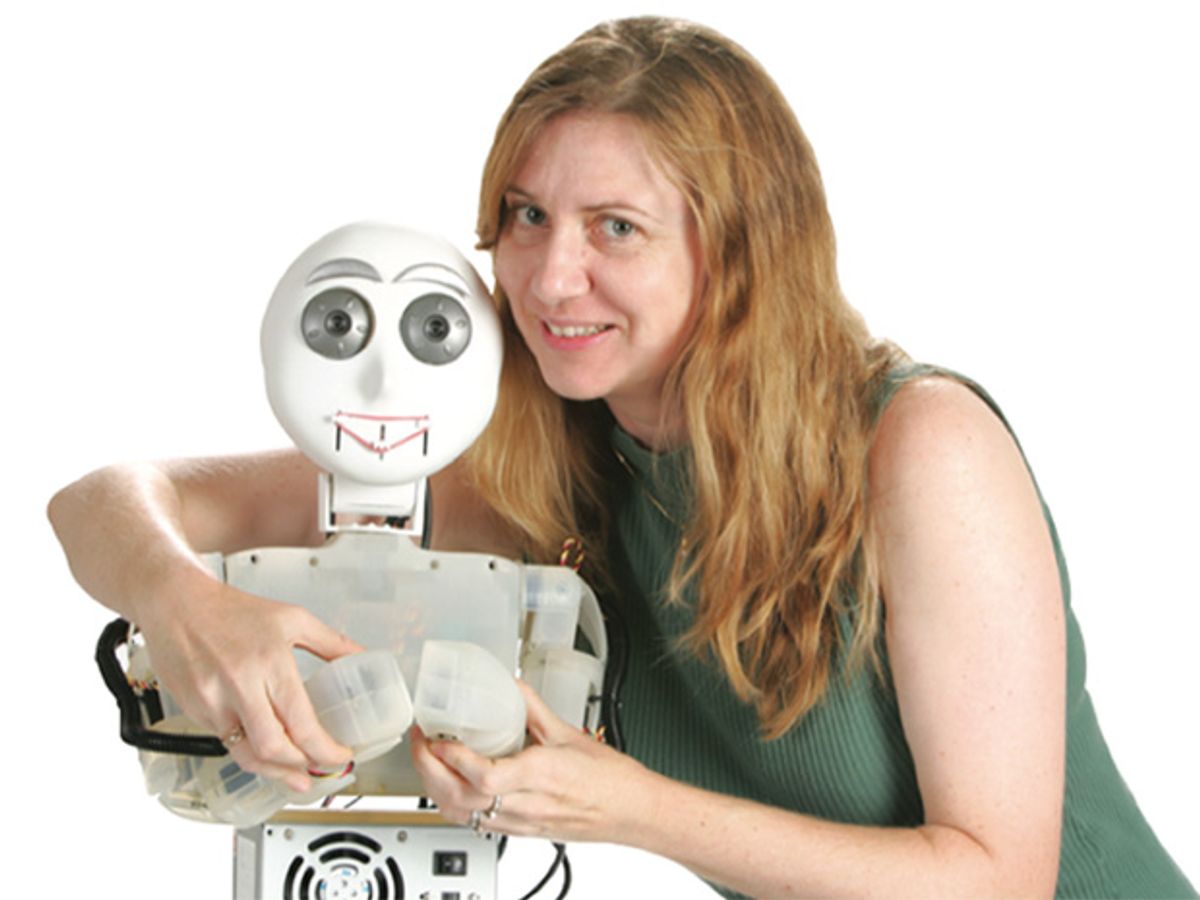
Last October, Maja Mataric learned a new twist on an old saying: Never share the stage with kids, animals—or robots.
She presented Bandit, a caregiving robot, to an audience of Los Angeles health-care workers, showing them videos of it blowing bubbles, making sounds, and mimicking the movements of children with autism and related disorders, winning over the kids better than most human caregivers would have done.
But when Mataric opened the floor to the audience, the first question wasn’t about how robotic caretakers might help people with cognitive and physical disabilities. Instead, a voice shouted from the back, “Can we come up and meet Bandit?”
Mataric, a University of Southern California professor in the computer science department and neuroscience program, has been studying the use of robots in health care since her graduate school days at MIT. Mataric envisions using therapeutic robots to rehabilitate patients who’ve had strokes or trauma injuries and to take care of the elderly, in addition to treating autism.
She already uses the robots to study patients. Bandit, for example, quietly collects data on a child’s behavior so that it can be used to predict, for instance, when the child is about to stop exercising. Mataric’s team hopes to try this out on children and young adults with autism, including a high-functioning form known as Asperger’s syndrome.
Some psychologists have speculated that Newton—and Edison, Einstein, and Tesla, to name just three others—had Asperger’s. True or not, such titans were able to rely exclusively on their superior intellects. For everyone else, social skills are essential.
“It’s an exciting new area,” Mataric says. “But it’s also frustrating, because it’s still so novel that it’s difficult to get funding for large-scale clinical trials.” In 2002, she founded the USC Center for Robotics and Embedded Systems to foster collaborations among experts in engineering, computer science, neuroscience, cognitive science, social science, and education.
Interdisciplinary work comes naturally to Mataric. When she moved to the United States from her native Yugoslavia at age 16, she was interested in art and psychology. But an uncle who worked as an aerospace engineer guided her to the more employable area of computer science. “Those interests all came together in artificial intelligence,” she says.
She earned a bachelor’s in computer science from the University of Kansas in 1987, then enrolled at MIT, earning a master’s in 1990 and a Ph.D. in 1994. She taught computer science at Brandeis University, in Waltham, Mass., before joining the faculty of USC in 1997, becoming a full professor three years ago. Along the way, Mataric wrote the popular introductory robotics textbook The Robotics Primer (MIT Press, 2007). She’s an IEEE Senior Member and an AAAS Fellow.
“It’s not research only for the sake of intellectual curiosity,” says Mataric. “I like knowing that it will be directly useful.”



